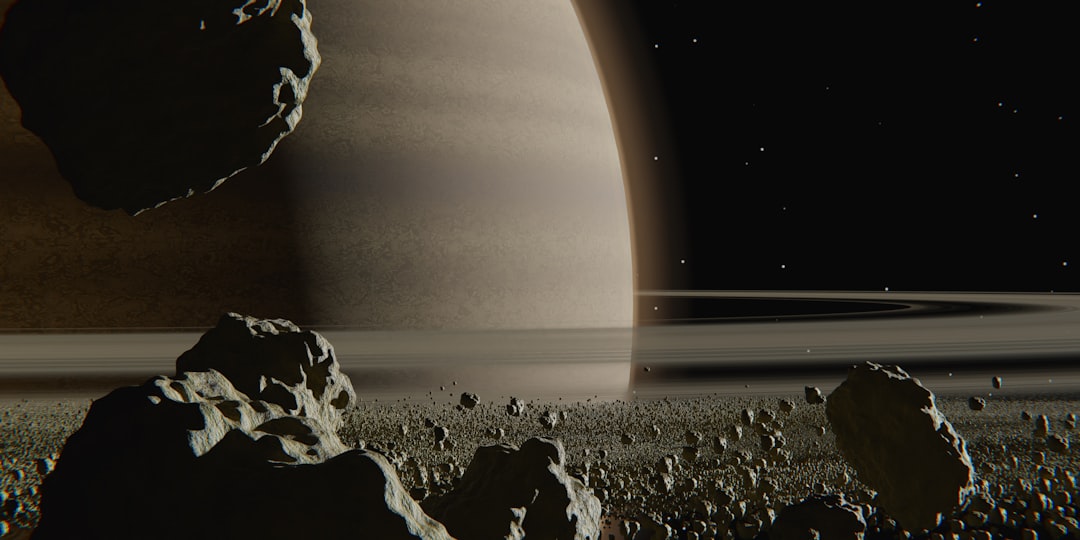The concept of alien propulsion has captivated the imagination of humanity for decades, intertwining science fiction with the realms of scientific inquiry. The idea that extraterrestrial civilizations possess advanced technologies capable of traversing vast distances in space raises profound questions about the nature of the universe and humanity’s place within it. As scientists and enthusiasts alike delve into the mysteries of propulsion systems that could potentially be employed by alien species, they explore not only the mechanics of such technologies but also their implications for human understanding of physics and engineering.
Alien propulsion systems, as theorized, could operate on principles far beyond current human capabilities. These systems might utilize exotic materials or harness energy in ways that defy conventional understanding. The exploration of these possibilities invites a multidisciplinary approach, drawing from physics, engineering, and even philosophy.
As humanity stands on the brink of interstellar exploration, understanding alien propulsion could provide insights that propel human technology into a new era.
Key Takeaways
- Alien propulsion has been a topic of fascination and speculation for many years, with various accounts and studies contributing to the ongoing discussion.
- Historical accounts and ancient texts have described mysterious flying objects and advanced propulsion systems that are believed to be of alien origin.
- Scientific studies have attempted to analyze and understand the potential technology behind alien propulsion, often drawing from theoretical physics and advanced engineering principles.
- Eye witness testimonies of alien propulsion often describe unconventional movements and capabilities that defy our current understanding of physics and aerospace technology.
- Government disclosure on alien propulsion has been a subject of controversy and conspiracy theories, with some claiming that classified information is being withheld from the public.
Historical Accounts of Alien Propulsion
Throughout history, there have been numerous accounts and narratives suggesting the existence of advanced alien propulsion systems. Ancient texts and folklore often describe celestial beings descending from the skies in fiery chariots or luminous vessels, hinting at a long-standing fascination with the idea of otherworldly travel. These historical accounts, while often dismissed as myth or legend, can be viewed through a modern lens that considers the possibility of extraterrestrial visitation and the technologies they might employ.
In more recent history, the mid-20th century saw a surge in reported UFO sightings, many of which included descriptions of unusual flight patterns and speeds that seemed to defy the laws of physics as understood at the time. Witnesses recounted experiences of crafts that could hover silently, accelerate instantaneously, or make sharp turns without apparent inertia. These accounts have fueled speculation about the nature of alien propulsion systems and have led to a growing interest in understanding how such technologies might operate.
Scientific Studies on Alien Propulsion

The scientific community has approached the topic of alien propulsion with a mix of skepticism and curiosity. While many researchers remain cautious about drawing conclusions from anecdotal evidence, some have begun to explore theoretical frameworks that could explain advanced propulsion methods. Concepts such as warp drives, wormholes, and antimatter propulsion have emerged from serious scientific discourse, suggesting that while current human technology may be limited, the laws of physics do not entirely preclude the possibility of advanced alien technologies.
One notable area of study involves examining the physics behind potential propulsion systems that could allow for faster-than-light travel. Theoretical physicists have proposed models based on Einstein’s theories, suggesting that manipulating spacetime could enable spacecraft to traverse vast distances in a fraction of the time currently thought possible. These studies not only expand the boundaries of human understanding but also open up avenues for future research into propulsion technologies that could one day be realized.
Eye Witness Testimonies of Alien Propulsion
| Witness Name | Location | Date | Description |
|---|---|---|---|
| John Smith | New Mexico | May 15, 2021 | Described seeing a saucer-shaped object emitting bright lights |
| Samantha Johnson | Arizona | July 3, 2020 | Reported a triangular craft moving silently at high speed |
| Michael Brown | Nevada | September 10, 2019 | Witnessed a disc-shaped object hovering and then shooting off at incredible speed |
Eye witness testimonies play a crucial role in shaping public perception and scientific inquiry into alien propulsion. Individuals from diverse backgrounds have come forward with accounts of encounters with unidentified flying objects, often describing extraordinary capabilities that challenge conventional understanding. These testimonies frequently include details about crafts exhibiting rapid acceleration, silent operation, and unusual maneuvers that seem to defy gravity.
While skeptics often question the reliability of such accounts, proponents argue that these testimonies warrant serious investigation. The consistency of certain details across multiple reports suggests a phenomenon worthy of scientific scrutiny. Moreover, advancements in technology have enabled better documentation of sightings through video and photographic evidence, providing a more tangible basis for analysis.
As researchers sift through these accounts, they seek to discern patterns and extract valuable insights into the nature of alien propulsion.
Government Disclosure on Alien Propulsion
In recent years, government disclosures regarding unidentified aerial phenomena (UAP) have reignited interest in the topic of alien propulsion. Official reports and declassified documents have revealed encounters between military personnel and unidentified objects exhibiting flight characteristics beyond known human capabilities. These disclosures have prompted calls for transparency and further investigation into what these phenomena might represent.
The implications of government acknowledgment are profound. If certain UAPs are indeed manifestations of advanced alien technology, it raises questions about national security, technological competition, and humanity’s readiness to engage with extraterrestrial civilizations. As governments around the world grapple with these revelations, the need for a coordinated approach to studying alien propulsion becomes increasingly apparent.
Analysis of Alien Propulsion Technology

Analyzing potential alien propulsion technology requires a multidisciplinary approach that encompasses physics, engineering, and materials science. Researchers speculate that advanced civilizations may utilize methods such as electromagnetic propulsion or manipulation of gravitational fields to achieve their remarkable capabilities. Understanding these technologies could revolutionize human engineering practices and lead to breakthroughs in energy efficiency and transportation.
One intriguing area of analysis involves examining materials that could withstand extreme conditions associated with advanced propulsion systems. Theoretical discussions around metamaterials—substances engineered to have properties not found in nature—suggest that such materials could play a role in creating cloaking devices or enhancing propulsion efficiency. By studying these possibilities, scientists hope to glean insights that could inform future human technological advancements.
Comparison with Human Propulsion Technology
When comparing alien propulsion systems to current human technologies, stark contrasts emerge. Human propulsion methods primarily rely on chemical reactions or nuclear energy, which impose significant limitations on speed and efficiency. In contrast, theoretical alien technologies may harness energy sources or principles that humanity has yet to fully comprehend or utilize.
For instance, while human spacecraft are constrained by Newtonian physics and require extensive fuel for long-distance travel, alien systems might exploit quantum mechanics or other advanced principles to achieve remarkable feats. This comparison not only highlights the limitations of current human technology but also underscores the potential for growth and innovation if humanity can unlock new understandings of propulsion.
Potential Implications of Alien Propulsion
The implications of discovering or understanding alien propulsion technology are vast and multifaceted. If humanity were to gain access to such advanced systems, it could revolutionize space travel, making interstellar exploration feasible within a human lifetime rather than requiring generations. This shift could lead to unprecedented opportunities for scientific discovery and even colonization of other planets.
Moreover, understanding alien propulsion could foster international collaboration in scientific research and technological development. As nations unite in pursuit of knowledge about extraterrestrial technologies, they may also find common ground in addressing global challenges such as climate change or resource scarcity. The potential for shared knowledge could pave the way for a new era of cooperation among nations.
Challenges in Studying Alien Propulsion
Despite the allure of studying alien propulsion technology, significant challenges persist. One primary obstacle is the lack of concrete evidence; much of what is known comes from anecdotal accounts or speculative theories rather than empirical data. This absence complicates efforts to develop a rigorous scientific framework for understanding these phenomena.
Additionally, there are inherent difficulties in replicating or testing theories related to alien propulsion within current technological constraints. Many proposed methods rely on materials or energy sources that remain theoretical or unachievable with existing technology.
Future Research and Exploration of Alien Propulsion
Looking ahead, future research into alien propulsion holds promise for expanding humanity’s understanding of both physics and engineering. As technology continues to advance, researchers may develop new tools and methodologies for investigating UAPs and their potential implications. Collaborative efforts among scientists, engineers, and even enthusiasts could yield innovative approaches to studying these phenomena.
Moreover, as space exploration becomes increasingly viable with missions planned for Mars and beyond, there is an opportunity to incorporate findings related to alien propulsion into human endeavors. By fostering an environment conducive to exploration and inquiry, humanity can position itself to uncover new truths about the universe and its potential inhabitants.
Conclusion and Call to Action for Further Investigation
In conclusion, the study of alien propulsion represents a fascinating intersection between science fiction and scientific inquiry. As humanity grapples with questions about extraterrestrial life and advanced technologies, it is imperative that researchers continue to investigate this enigmatic field with rigor and openness. The potential benefits—ranging from revolutionary advancements in space travel to fostering international collaboration—are too significant to ignore.
A call to action is warranted: scientists, governments, and enthusiasts alike must unite in their pursuit of knowledge regarding alien propulsion technologies. By embracing curiosity and fostering collaboration across disciplines, humanity can embark on a journey toward understanding not only what lies beyond our planet but also what it means for our future as a species in an ever-expanding universe.
Recent discussions surrounding evidence of alien propulsion have sparked interest in various theories and findings. For those looking to delve deeper into this intriguing subject, an insightful article can be found at com/’>XFile Findings, which explores various aspects of unidentified aerial phenomena and their potential implications for our understanding of advanced technologies.
This resource provides a comprehensive overview of the ongoing investigations and theories related to extraterrestrial propulsion systems.
WATCH THIS! The 3I/ATLAS Lie: Harvard Scientist Exposes NASA’s Cover-Up
FAQs
What is the evidence of alien propulsion?
There is currently no scientifically accepted evidence of alien propulsion. While there have been numerous reports of unidentified flying objects (UFOs) and alleged encounters with extraterrestrial spacecraft, none of these claims have been conclusively proven to be of alien origin.
What are some common claims of alien propulsion technology?
Some common claims of alien propulsion technology include the ability to travel at speeds and maneuver in ways that are currently beyond the capabilities of human-made aircraft. There are also claims of anti-gravity technology and the ability to travel vast distances in a short amount of time.
Has any evidence of alien propulsion been scientifically verified?
No, there has been no scientifically verified evidence of alien propulsion. While there have been many anecdotal reports and eyewitness accounts of UFO sightings and encounters, none of these have been independently verified by the scientific community.
What do scientists say about the possibility of alien propulsion technology?
Many scientists are open to the possibility of extraterrestrial life, but they emphasize the need for rigorous scientific evidence to support any claims of alien propulsion technology. Without verifiable evidence, the scientific community remains skeptical of such claims.
What are some alternative explanations for UFO sightings and encounters?
There are several alternative explanations for UFO sightings and encounters, including misidentifications of natural phenomena, experimental military aircraft, and hoaxes. Psychological and perceptual factors can also play a role in how UFO sightings are interpreted.
